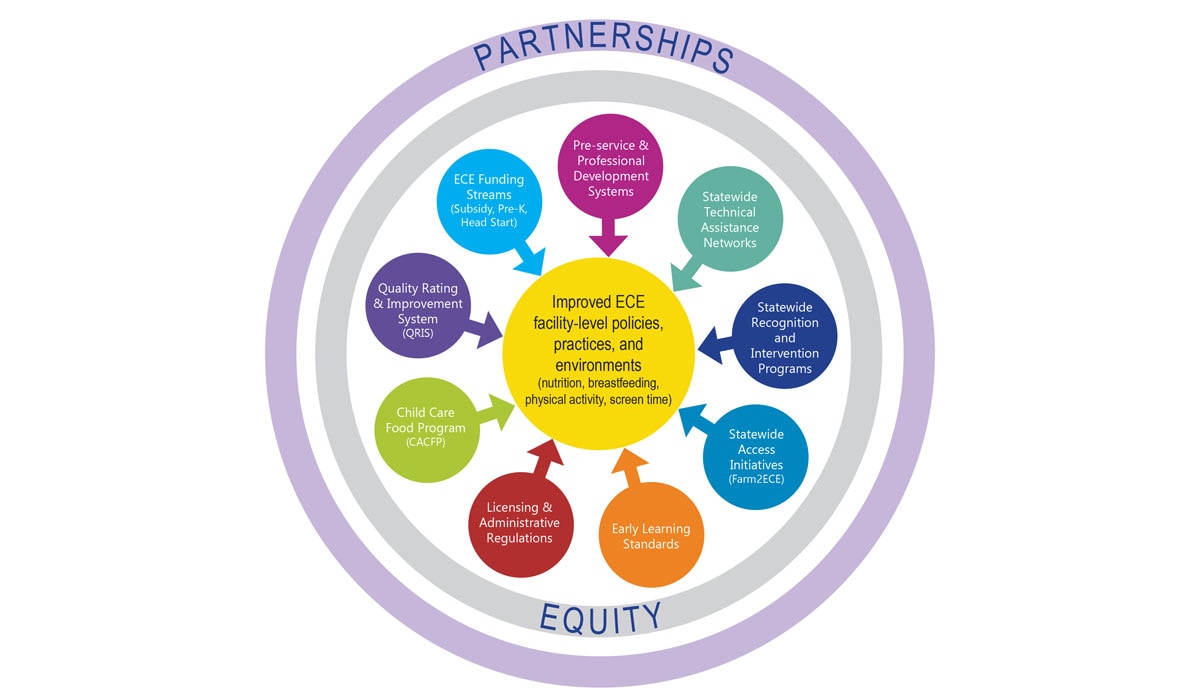What to know
Farm to Early Care and Education (ECE) increases children's access to fresh, healthy food. It also helps children learn more about food and gardening. Here are ways states and communities can get started.

State actions
Identify partnerships and coalitions that can advance Farm to ECE. Most states support Farm to ECE programs through state or local activities. The National Farm to School Network (NFSN) has a state list of supporting partner organizations. If your state does not have a Farm to ECE coalition, you can consider starting one. Start by reaching out to key partners, such as an existing Farm to School Coalition.
Build state capacity
- Learn more about available resources such as those from NFSN and Supplemental Nutrition Assistance Program Education (SNAP Ed) toolkit.
- Create a state Farm to ECE Strategic Plan, such as Colorado's Farm to Child Road Map.
- Understand existing federal funding opportunities to support Farm to ECE.
- Use CDC's Spectrum of Opportunities Framework to guide your statewide Farm to ECE work.

Community actions
Connect with state initiatives and coalitions. Start a local coalition if a state coalition does not exist.
Build local capacity
- Connect with your local Child Care Resource and Referral Agency to help engage ECE programs in Farm to ECE initiatives.
- Learn from other communities and their Farm to ECE work, such as those from the CDC-funded Racial and Ethnic Approaches to Community Health program.
We are making a difference
CDC provides funding and technical assistance to states and communities to advance Farm to ECE. Learn more about the priority Public Health Strategies for ECE, what others are doing, and Farm to ECE success stories.
